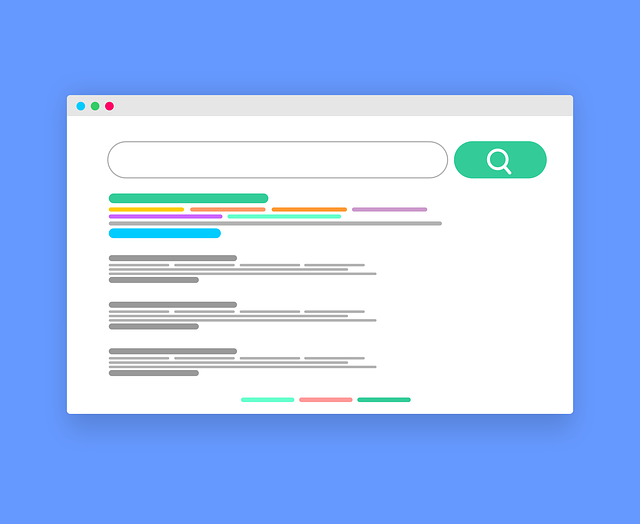Overview of Create a Mobile Friendly Website
The goal of a mobile-friendly website is to offer the best possible viewing experience across a range of devices, especially tablets and smartphones. This entails making certain that the content is aesthetically pleasing, navigable, and readily available on smaller screens. Among the essential qualities of mobile-friendly websites are:Responsive design: Responsive design makes sure that consumers enjoy a smooth experience on any device by adjusting the layout of the website to fit various screen sizes.
Fast Loading Times: Websites must load quickly to avoid high bounce rates because mobile users expect to obtain content quickly.
User-Friendly Navigation: Users can locate what they need more easily with simplified menus and obvious calls-to-action (CTAs).

Steps to Create a Mobile Friendly Responsive Website
Making a mobile friendly responsive website requires a number of calculated actions:Step 1: Choose a Responsive Design Template
First, choose a responsive theme or template from your website builder platform (e.g., Wix, WordPress). The design process is made simpler by these templates, which automatically adapt information for various screen sizes16.Step 2: Make the Content Layout Better
Content should be rearranged to improve visibility on smaller displays. Effectively employ headers to divide content and establish visual hierarchy so that people can more easily and rapidly scan information912.Step 3: Implement Touch-Friendly Features
Make sure that every interactive element is touch-friendly by making them larger and separating them sufficiently to avoid unintentional clicks.Step 4: Test Across Devices
To make sure your website is responsive and compatible, test it frequently across a range of devices and browsers. For comprehensive testing510, tools such as BrowserStack can assist in simulating various settings.Step 5: Monitor Performance Metrics
Utilize analytics software to track how users interact with your website. To find areas for improvement, keep an eye on data like bounce rate, session duration, and conversion rates.Benefits of a best mobile friendly websites
There are several benefits to developing a mobile-friendly website, ranging from higher search engine results to increased user engagement and client loyalty. Here is a summary of the main advantages:1. Better UX (User Experience)
Any device can access and read content thanks to a mobile-friendly website. Users are more inclined to explore other pages and remain on the site longer when navigation is clear and easy to use. Larger buttons, scrollable content, and legible language are examples of features that improve user experience and entice users to interact with the content.2. Increased Search Engine Visibility
Due to Google's mobile-first indexing, mobile-friendly websites are more likely to appear higher in search results. A responsive design reduces bounce rates and improves engagement metrics, signaling to search engines that users find the site valuable. This, in turn, positively impacts the site's search engine ranking, making it easier for users to find the business through organic search.3. Increased Rates of Conversion
Conversion rates can be greatly increased with a smooth mobile browsing experience. A hassle-free experience increases the likelihood that consumers will convert, whether they are making a purchase, completing a form, or subscribing to a newsletter. According to studies, people who rely on smartphones for online shopping and customer support are more likely to interact with and make purchases from mobile-friendly websites.4. Enhanced Brand Reputation
A website that is optimized for mobile devices shows that a company is dedicated to keeping up with the latest developments in technology. Businesses gain the audience's trust and loyalty by offering an intuitive mobile experience. Additionally, a responsive design aids in communicating professionalism and credibility—two qualities that are critical for companies hoping to become industry leaders.How to get responsive web design services ?
Take these actions to get responsive web design services:Step 1: Define Your Requirements
Clearly define your needs before looking for web design services:- The intended audience Determine who will visit your website and what kind of gadgets they will probably use.
- Type of Content: Choose the kind of content you want to display, such as text, pictures, or videos.
- Functional prerequisites: Enumerate any particular features you require, such as contact forms or e-commerce capabilities.
Step 2: Research Potential Service Providers
Seek out freelancers or web design firms who have expertise building responsive websites. Think about the following:- Portfolio: Examine their prior work to gauge their responsiveness and design aesthetic.
- Customer Testimonials: Examine previous customers' reviews or testimonials to gain insight into their dependability and level of service.
- Technical Expertise: Ensure they are familiar with modern web technologies such as HTML5, CSS3, JavaScript frameworks (like React or Angular), and CMS platforms (like WordPress or Drupal).
Step 3: Evaluate Their Approach to Responsive Design
Inquire about the responsive design methodology of prospective designers or firms during interviews:- Design Process: Learn how your responsive website will be made. Do they prioritize mobile devices ? How do they manage cross-device testing ?
- Technologies and Tools: Ask them about the design and development tools they use, such as Bootstrap for front-end development and Adobe XD for wireframing.
- Maintenance and Assistance: Talk about post-launch possibilities for continuing assistance, such as updates and troubleshooting.
Step 4: Test Your Website Thoroughly
Prior to the release of your responsive website:- Testing across browsers: Test your website on a variety of devices (such as smartphones and tablets) and browsers (such as Chrome, Firefox, and Safari).
- User Testing: To obtain usability insights, conduct user testing sessions with actual users from your target demographic.
Step 5: Launch and Monitor Performance
Following extensive testing:- Start Your Website: Launch your site after everything is ready.
- Track Analytics: After the launch, monitor user behavior with tools like Google Analytics. Keep an eye on KPIs like conversion rates, session duration, and bounce rate.
How does a responsive mobile friendly improve the brand’s credibility and reputation ?
In today's mobile-driven world, a brand's trust and reputation are greatly increased by a responsive, responsive mobile friendly. Here's how:1. Demonstrates Professionalism and Modernity
A flexible website shows that a company is aware of the most recent developments in technology and the web. Brands who invest in a seamless, device-agnostic experience demonstrate expertise and an understanding of customer demands as more and more users access information on mobile devices. On the other side, a brand may come across to its consumers as antiquated or unfocused if its mobile experience is awkward or poorly optimized.2. Builds Trust Through Consistent User Experience
A responsive website gives the business a unified appearance and feel across all platforms, fostering brand familiarity and trust. When customers can easily navigate a website on a PC, tablet, or smartphone, it indicates that the brand values their experience, which reinforces reliability and builds a positive reputation.3. Reduces Frustration and Increases Engagement
Websites that are hard to read or navigate on mobile devices quickly lose consumers. A responsive website makes interactions fluid and pleasurable by reducing problems like clumsy scrolling, pinching to zoom, or sluggish load times. As a result, people are more engaged and willing to return, which eventually boosts good perceptions and loyalty.4. Increases Search Engine Credibility and Brand Visibility
Particularly with mobile-first indexing, Google and other search engines give preference to mobile-friendly websites in search results. Brands that have responsive websites have a better chance of appearing higher in search results, which boosts their visibility. Because people tend to regard highly ranked websites as more authoritative and trustworthy, higher ranks and improved search performance also increase a brand's reputation.5. Shows Commitment to Accessibility
Due to its inherent accessibility, a mobile-friendly website facilitates communication between the business and a wide variety of users, including those with slower connections or those utilizing assistive technology. The brand's ideals and commitment to catering to a wide range of consumers are positively reflected in its commitment to inclusivity.How to buy free mobile friendly website templates ?
1. Website templates
A number of websites focus on providing free website templates.Colorlib: This website offers more than 33 free mobile-friendly website templates that may be used in a variety of fields, such as business, education, and fitness. Modern aesthetics and usefulness are considered in the design of each template.
Mobirise: Mobirise offers a variety of adaptable mobile website designs to suit users with varying degrees of expertise. Their drag-and-drop interface makes it simple and quick to construct a website that looks professional.
Tooplate: Tooplate provides over 60 responsive and mobile-friendly HTML website designs. Their templates come in a variety of categories, so it's simple to choose one that meets your requirements.
BootstrapMade: This site has numerous free Bootstrap-based templates that are fully responsive and visually appealing. They provide clean designs suitable for different types of websites.
WebWave: WebWave features a growing library of nearly 100 free responsive website templates built with HTML5 and CSS3. Users can customize these templates easily to suit their specific requirements.
2. Marketplaces for Design
Some design markets provide both premium and free downloading templates:TemplateMonster: Although TemplateMonster is well known for its paid themes, it also offers a number of free responsive website templates for download.
Themezy: Themezy offers a range of free responsive website templates, such as the SmartApp template, which is intended especially for product and app demonstration.
3. Systems for managing content (CMS)
Many themes are available straight from the repositories of content management systems (CMSs) like WordPress and Joomla.Theme repository for WordPress: In WordPress, look for mobile-friendly themes by going to the "Themes" option under "Appearance." Themes can be filtered based on responsiveness.
Joomla Template Directory: Like WordPress, Joomla provides a selection of readily installable, free responsive templates.
People Also Ask
What is it called when a website is mobile friendly?
A website is frequently called mobile-optimized when it is mobile-friendly. This phrase denotes that the website is made to offer the best possible viewing experience on mobile devices, including tablets and smartphones. Websites designed for mobile devices are organized to provide simple navigation, content that can be read without zooming in, and buttons that are the right size for touch interactions.What does it mean to be mobile friendly?
A website is said to be mobile-friendly if it is created and optimized to work well on mobile devices. Having a layout that adapts to smaller displays is one way to guarantee that content is easily accessible without requiring a lot of scrolling or zooming. In order to meet the demands of mobile users, mobile-friendly websites put an emphasis on the user experience by including features like bigger buttons, easier navigation, and quick loading times.Can I make my website mobile-friendly?
Yes, you can use specific design techniques to make your website mobile-friendly. Usually, this entails employing responsive web design, which enables your website to change its layout automatically according to the device's screen size. If you're using a content management system (CMS) like WordPress, you can also employ plugins or layouts designed specifically for mobile devices. Furthermore, testing resources like as Google's Mobile-Friendly Test can assist in pinpointing areas in need of development.How do I convert my mobile website to responsive?
Use these procedures to transform your mobile website into a responsive design:- Evaluate Your Present Website: Determine which elements require modification to accommodate different screen widths.
- Use Frameworks That Are Responsive: Use frameworks that offer pre-built responsive grid systems, such as Foundation or Bootstrap.
- Modify CSS: Use CSS media queries to create rules that apply different styles based on screen size.
- Test Across Devices: Regularly test your site on multiple devices and screen sizes to ensure proper functionality and appearance.
- Optimize Images: Ensure images are responsive and load efficiently across devices
What is a mobile friendly website ?
A website that has been specifically created to be easily accessible and useable on mobile devices is known as a mobile-friendly website. This includes attributes like information that works well on smaller displays, quick loading times, and easy navigation. These websites improve user experience by facilitating text reading, button interaction, and information retrieval without causing layout problems or unnecessary scrolling.What is the difference between mobile friendly and mobile responsive ?
Although they pertain to rather different ideas, the terms mobile-friendly and mobile-responsive are frequently used interchangeably:Websites that have been optimized for mobile devices but may not adjust dynamically according to screen size are generally referred to be mobile-friendly. They could look like scaled-down desktop versions of websites with poor usability34.
Mobile-Responsive: A responsive website automatically adjusts its layout and content based on the device's screen size and orientation. This means that elements such as images, text, and navigation adapt fluidly for an optimal user experience across all devices.
How much does it cost to make a website mobile friendly ?
Depending on a number of variables, the price of making a website mobile-friendly might vary significantly:Existing Website Condition: Compared to creating a brand-new responsive website from start, expenses can be lower if you already have a website that needs a few small tweaks.
Design Complexity: Because more development effort is required, more complex websites with sophisticated features will typically cost more.
Rates for Service Providers: Depending on their location and level of experience, hiring a professional web designer or developer can cost anywhere from $500 to several thousand dollars.
DIY Options: Using plugins or templates can be inexpensive (typically free or under $100), but it may take some technical know-how.
People Searching These Types of keywords for mobile friendly websites :
non mobile friendly websites examples, responsive mobile friendly, top mobile friendly websites, friendly website design, mobile friendly web design, mobile friendly design, best mobile friendly websites, design a mobile website, creating a mobile friendly website, mobile friendly responsive design, mobile friendly responsive website, mobile friendly web designer, mobile friendly website development, mobile ready websites, top mobile friendly websites
For More Info :
https://createncode.com/







